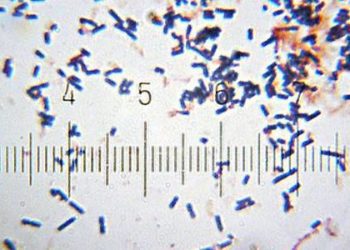Daily oral probiotic combination not effective at reducing antibiotic use for all-cause infection among care home residents
1. A daily probiotic combination consisting of Lactobacillus rhamnosus GG and Bifidobacterium animalis subsp lactis BB-12 did not reduce the use of antibiotics for all-cause infection compared to placebo.
2. Participants in the probiotic group had significantly higher rates of lower respiratory tract infections compared to the placebo group.
Evidence Rating Level: 1 (Excellent)
Study Rundown: Probiotics have been looked at for their potential to prevent infections and limit the need for antibiotics. While studies on pediatric patients have shown some promise, the evidence in older adults, who are more prone to infections, is still lacking. In this study, researchers investigated whether a daily dose of an oral probiotic would be effective at reducing the cumulative use of antibiotics for all-cause acute infections over one year in a population of home care residents. Findings suggest that the probiotic combination was not effective at reducing the frequency of antibiotic use compared to placebo. With the variable results in the growing field of probiotics, these findings provide objective data through its double-blind study approach. However, future studies may look to take a more directed approach as the probiotic strain and method of administration used may yield variable results depending on the specific infection of interest.
Click to read the study in JAMA
In-Depth [randomized controlled trial]: In this randomized, double-blind clinical trial, 390 UK care home residents (mean age, 85.3 years) were recruited between December 2016 and May 2018. Participants were eligible if they were 65 years of age or older, not immunocompromised, and not regularly using antibiotics. Participants were randomized to receive either a daily dose of oral probiotic combination of Lactobacillus rhamnosus GG and Bifidobacterium animalis subsp lactis BB-12 (total cell count per capsule, 1.3 x 1010 to 1.6 x 1010) or placebo (maltodextrin, microcrystalline cellulose, magnesium stearate, and silicon dioxide) for up to one year. The primary outcome of interest was the cumulative systemic antibiotic administration days while secondary outcomes include specific infection categories and infection-related symptoms. Study results indicated that there were no significant differences in cumulative systemic antibiotic administration days between the probiotic group (mean days [SD], 12.9 [18.4], 95% confidence interval [CI], 0 to 18.05 days) and the placebo group (mean days, 12.0 [18.6], 95% CI, 0 to 16.95 days). The adjusted incidence rate ratio (IRR) was found to be 1.13 (95% CI, 0.79 to 1.63; P = 0.50). Additionally, there were no statistical differences between groups for the rates of urinary tract, upper respiratory, and skin infections. However, those in the probiotic group were shown to have an increased rate of lower respiratory tract infections compared to placebo (mean 6.2 and 4.0 days, respectively; adjusted IRR, 1.42, 95% CI 1.05 to 1.93; P = 0.02).
Image: PD
©2020 2 Minute Medicine, Inc. All rights reserved. No works may be reproduced without expressed written consent from 2 Minute Medicine, Inc. Inquire about licensing here. No article should be construed as medical advice and is not intended as such by the authors or by 2 Minute Medicine, Inc.






